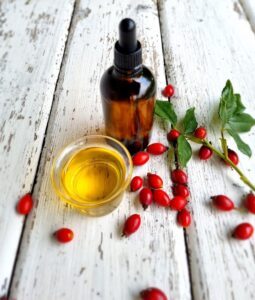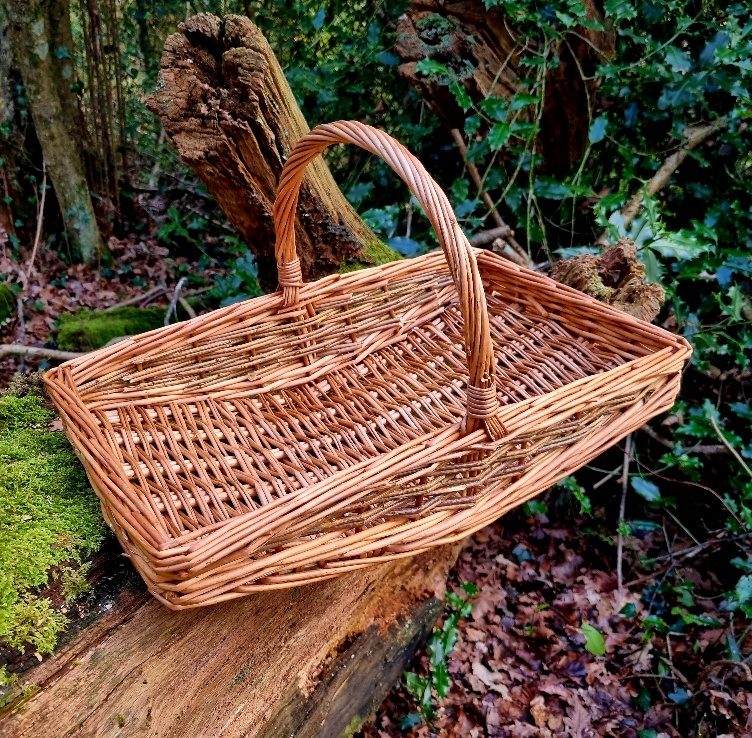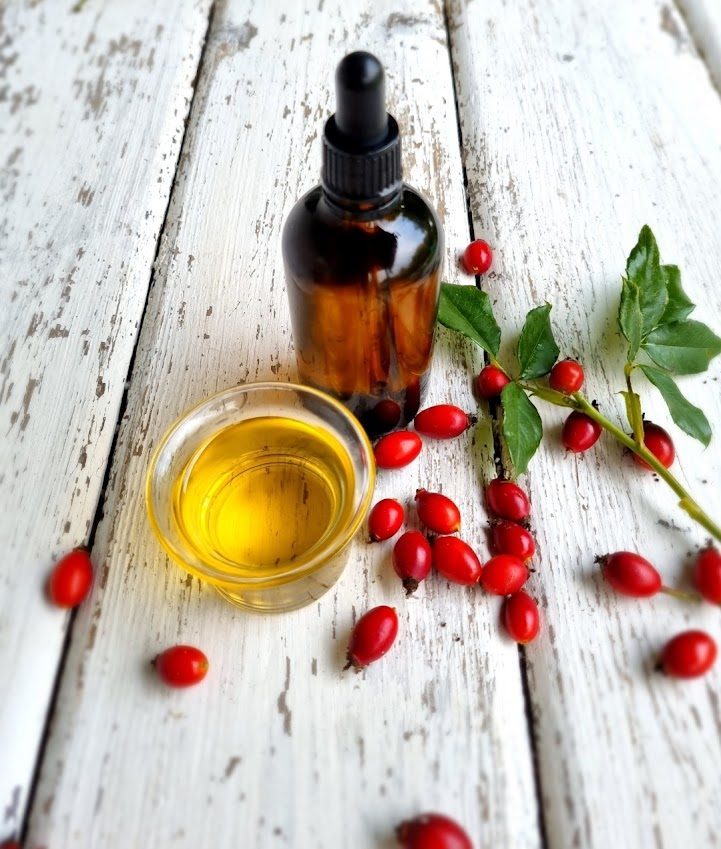Rosehip syrup has long been used to stave off winter colds, thanks to their high vitamin content, but did you know they are a lifesaver for winter skin? Packed full of nutritious vitamins A, C and E, these and their essential fatty acids work to reduce inflammation and bruises, treat acne, soothe stretch marks and scars and even (and I like this best) reduce the appearance of fine lines and wrinkles.
Pick the rosehips on a sunny morning when they are dry; as with sloes it is always helpful to gather them after the first frost as it makes their skin softer. Fresh hips contain little hairs which can be irritating to the skin, so they need a little prepping before you make your serum; while any rose hips can be used, try and find some of the chunkier ones if you can as it will save you lots of time when it comes to cleaning them. Although they need to be thoroughly dried before you use them (they have a high moisture content and any water going into your precious oil will cause it to spoil quickly), the dried hips also make a beautiful tea. Steep one tablespoon of roughly chopped rosehips in boiling water for 3 to 4 minutes before straining and adding in a little honey; perfect if you feel like you are coming down with a winter bug!
As with all foraging, make sure they have not been sprayed with any chemicals and are away from traffic pollution; only take as many as you need. Avoid any rose hips that have started to blacken or that are squishy, and wear gloves to avoid being scratched.
Ingredients
1 cup of dried rosehips
2 cups sweet almond oil
Muslin
Amber dropper bottles
- Prepare your rosehips. Cut them in half and carefully scoop out the seeds and hairs before rinsing thoroughly (if you have very sensitive skin you might like to wear gloves for this).
- Dry the hips. If you have a dehydrator then dry them according to the manufacturer’s instructions, but you can also lay them on a baking sheet and pop them in the oven for 3 to 4 hours at 50 degrees centigrade until thoroughly desiccated and crispy. I have had great success by putting them on a wire rack above my woodburner, but you could tuck them away in the airing cupboard for a few days too.
- The facial oil recipe couldn’t be simpler. Place the dried hips in your slow cooker, add the almond oil and heat for 8 hours on the ‘low’ setting (you don’t want the oil to heat up too much or all those magic healing properties may be affected).
- Allow the mixture to cool and stir before straining through a layer of muslin (just in case any hairs have slipped the net!). The easiest way to do this is by laying the muslin over a jug and securing it in place with an elastic band, then just topping it up as the oil drips through.
- Store in an amber bottle with dropper to preserve the oils as long as possible, and keep in a cool dark place.
- Massage 2-3 drops of oil onto damp skin morning and evening. It works wonders on dry hair if you rub a couple of drops through the ends, and can also be rubbed onto nails and cuticles.
- The mixture should last up to six months, but if at any point the fragrance changes then discard, as the oil may have gone rancid. bedtime. I would also recommend you do a patch test first, just in case your skin is sensitive to the ingredients.
Taken from Sustainable Crafts, Gifts and Projects for All Season by Becci Coombes

Traditional willow foraging basket/garden trug
Woven from double steamed unpeeled willow, this beautiful wicker garden trug is perfect for a foraging trip to the woods or harvesting your beautiful garden blooms!
Willow is a great eco-friendly resource as it is quick growing and locks up huge amounts of carbon. Once harvested and woven into baskets the carbon is locked away until eventually (hopefully never!) the willow biodegrades and re…





